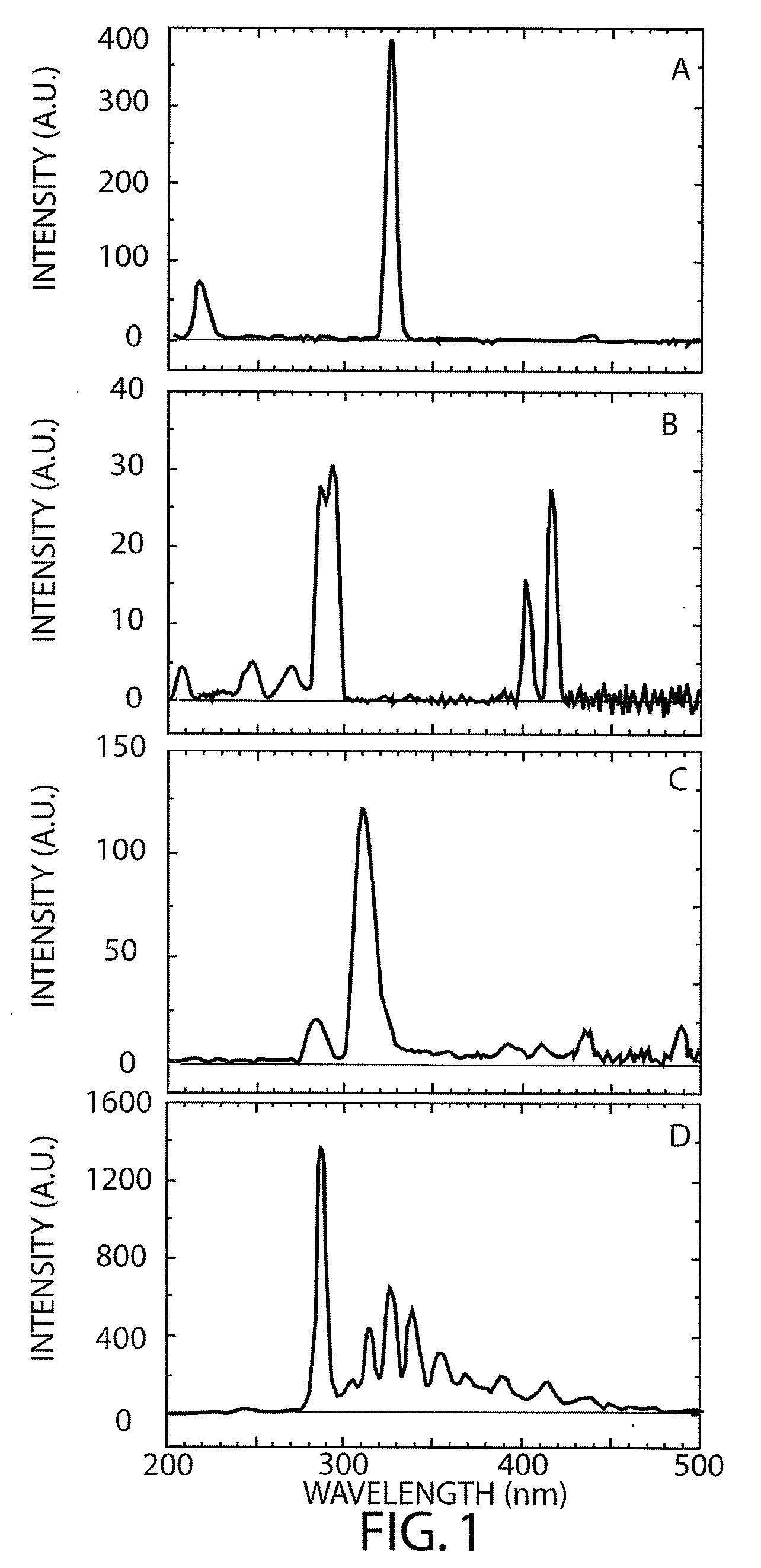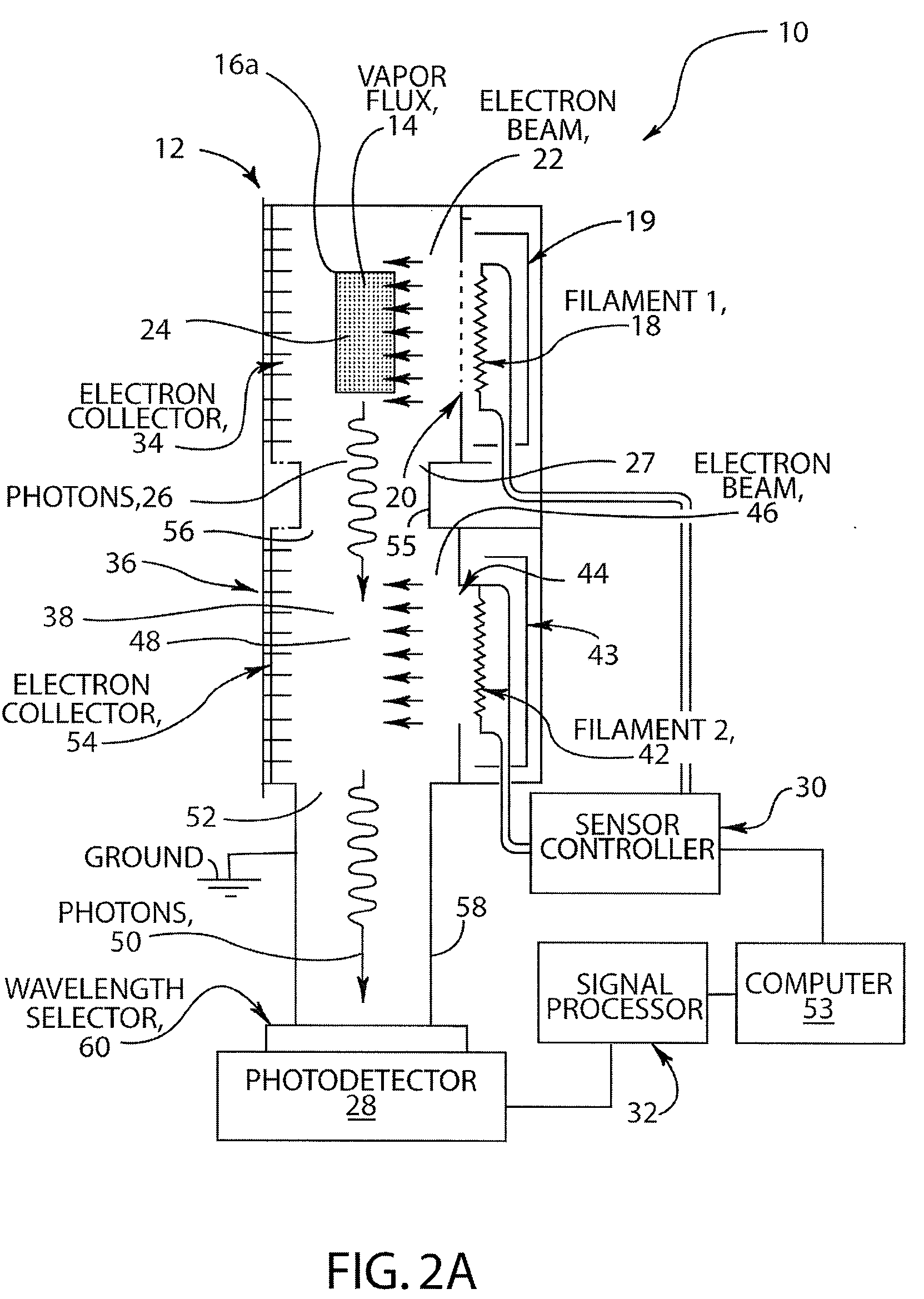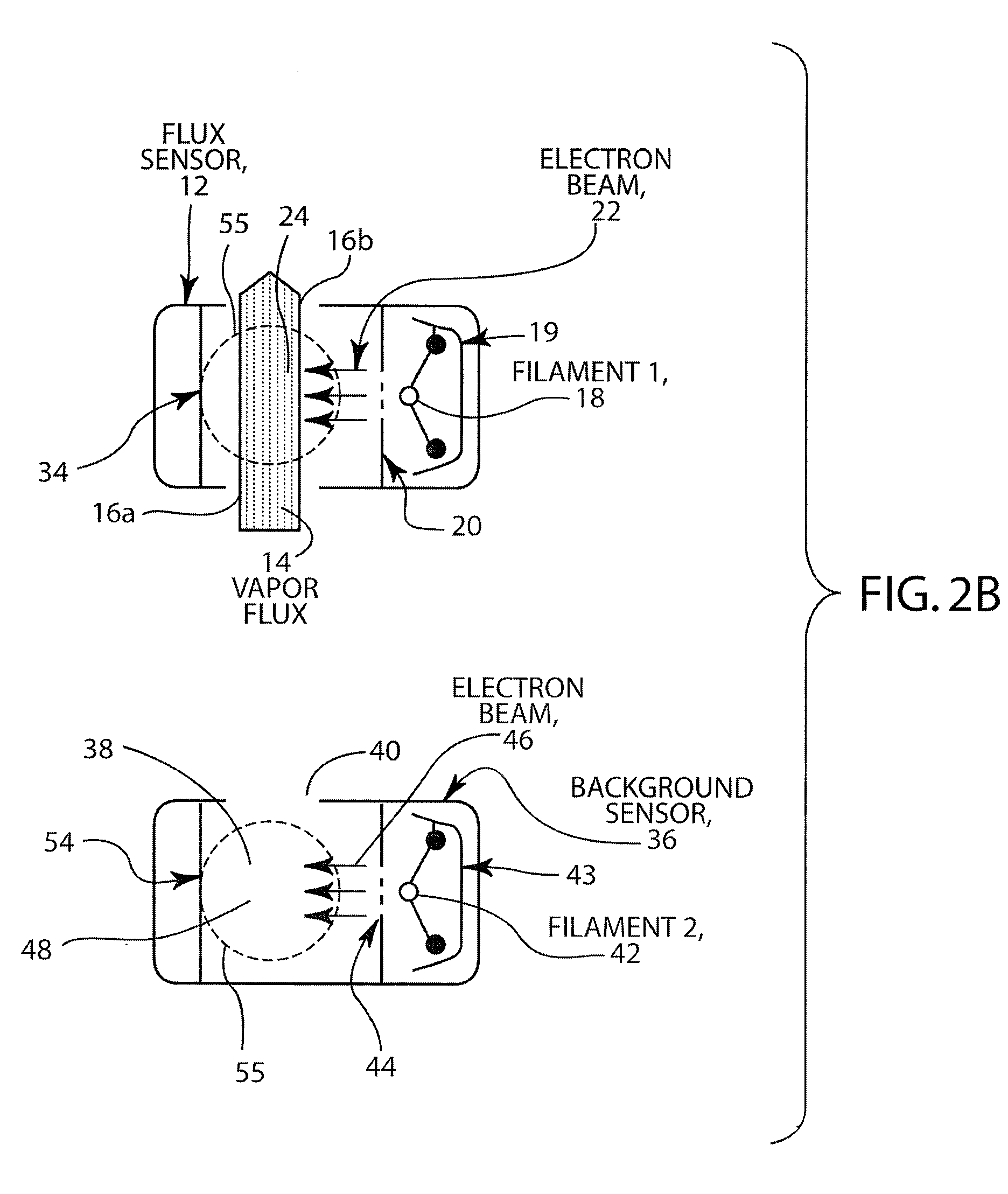Apparatus and method for measuring vapor flux density
a technology of vapor flux density and apparatus, applied in the direction of optical radiation measurement, instruments, spectrometry/spectrophotometry/monochromators, etc., can solve the problems of most pronounced interference and error in flux measurement, and achieve the effect of improving the utility of eies
- Summary
- Abstract
- Description
- Claims
- Application Information
AI Technical Summary
Benefits of technology
Problems solved by technology
Method used
Image
Examples
example 1
[0040]Using a bandpass filter having a center wavelength at 325 nm and a FWHM (full-width-at-half-maximum) of 10 nm, Cu emission lines were detected at 324.7 and 327.4 nm. The deposition rate measured at the QCM sensor was about 0.25 nm s−1 as shown in FIG. 5A. During the evaporation process, water partial pressure was increased by more than one order of magnitude to 1.5×10−5 Torr as indicated by the ionization gauge reading shown in FIG. 5B. FIG. 5C shows the output signal from the first chamber of the EIES sensor as a function of time. This measurement is the equivalent of a measurement using an existing EIES sensor. It may be observed that the superposition of the interfering gas signal (from OH) and the Cu flux signal renders the EIES output useless for monitoring the Cu deposition rate. However, with the addition of a second chamber to the EIES sensor, the interfering gas signal can be separately measured as shown in FIG. 5D. The output from the second chamber the two-chamber E...
example 2
[0041]A Ga emission line at 294.4 nm was chosen to demonstrate the effectiveness of the present two-chamber EIES sensor in the presence of interfering gas signal (CO2+ emission bands from 287 to 290 nm) from CO2 present during the deposition, as illustrated in FIG. 6 hereof. The optical filter used for the photo-detection system has a center wavelength at 294.4 nm and a FWHM of 2 nm. The deposition rate at the QCM was about 0.5 nm s−1 (FIG. 6A) with CO2 partial pressures varying between about 5×10−6 Torr and 9×10−6 Torr (FIG. 6B). The signals from chamber 1 and chamber 2 are shown in FIGS. 6C and 6D as a function of time. A Ga flux signal, free of interference from CO2 gas, was obtained as shown in FIG. 6E.
[0042]Tests of the present two-chamber EIES sensor have been conducted using partial pressures of various interfering gases in the 10−4 Torr range, the upper pressure limits for the EIES sensor being imposed by pressure limitations on the proper functioning of the thermionic emitt...
PUM
| Property | Measurement | Unit |
|---|---|---|
| Electric potential / voltage | aaaaa | aaaaa |
| Time | aaaaa | aaaaa |
| Partial pressure | aaaaa | aaaaa |
Abstract
Description
Claims
Application Information
 Login to View More
Login to View More - R&D
- Intellectual Property
- Life Sciences
- Materials
- Tech Scout
- Unparalleled Data Quality
- Higher Quality Content
- 60% Fewer Hallucinations
Browse by: Latest US Patents, China's latest patents, Technical Efficacy Thesaurus, Application Domain, Technology Topic, Popular Technical Reports.
© 2025 PatSnap. All rights reserved.Legal|Privacy policy|Modern Slavery Act Transparency Statement|Sitemap|About US| Contact US: help@patsnap.com



